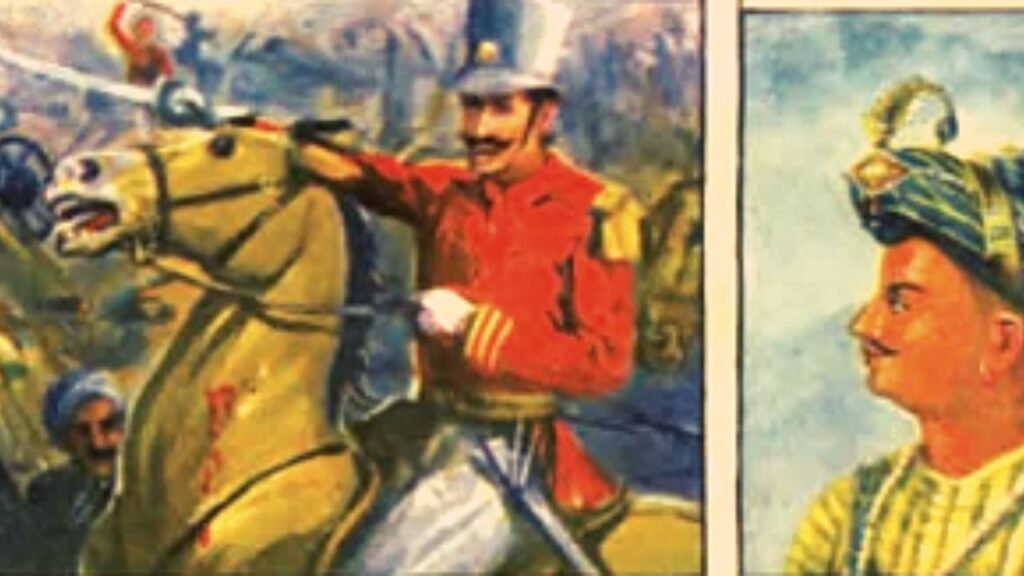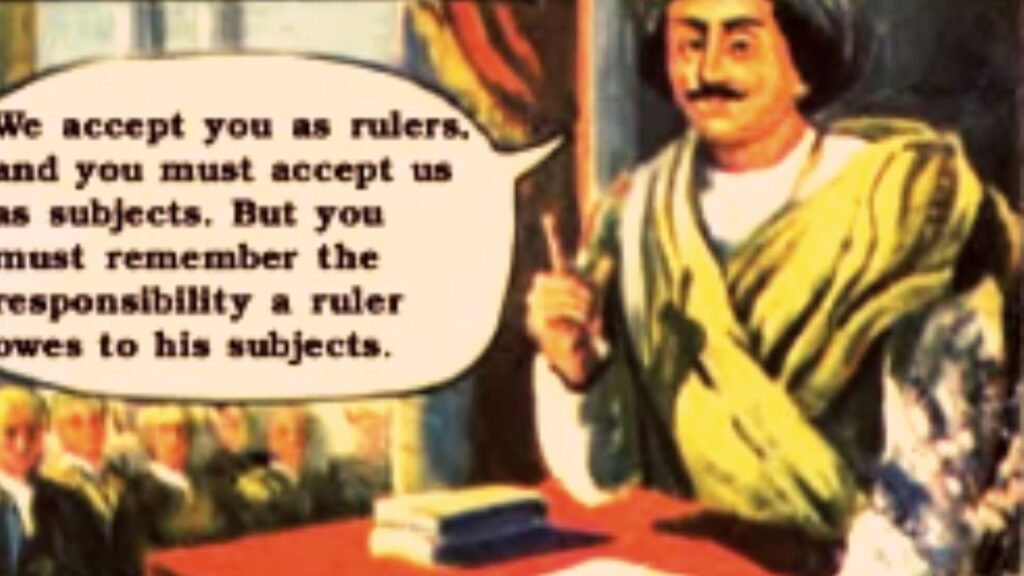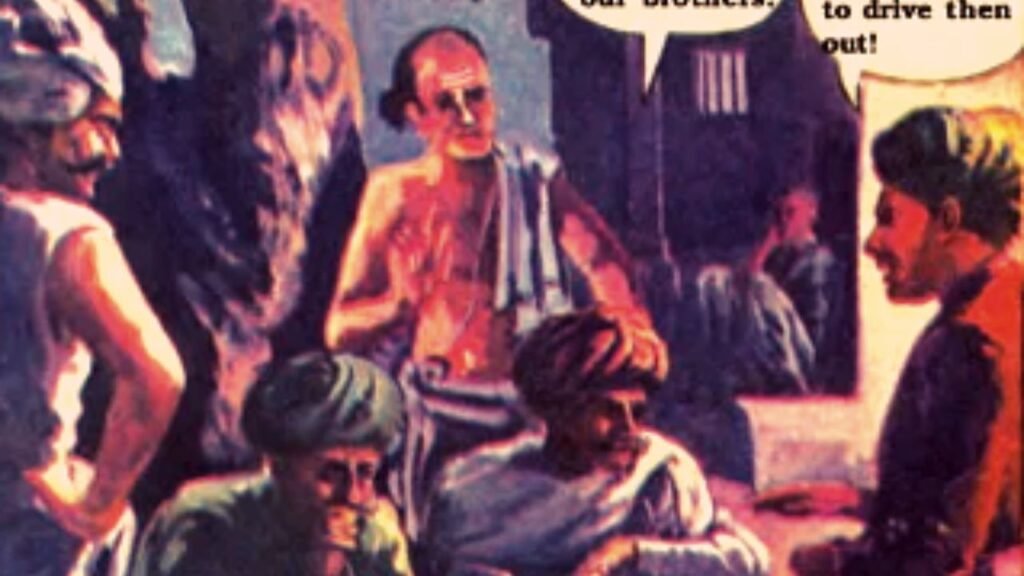The Company’s conquests (1757-1849):
In the period 1765, The British East India Company was very strong with its superior weapons. Compared to Indian princes the British have superior weapons. Indian princes fought with each other. They often seek the help of the East India Company to defeat the other princes in the war. The People had no peace due to such a war.
This worked in favor of the east India Company. The Competition helped the East India Company and it could easily downcast Indian princes one by one. Anyhow, brave ruler like the Tippu Sultan of Mysore fought the British until he died on the Battlefield.

The Indians react in different ways to these conquests. The first people were very happy with the British and were grateful as they thought finally the peace in the country now. The second people were seeing what was happening here. They think that the British killed our kings, Some kings were not good, They realized they have become slaves of foreigners.
British Rule (1765-1836):
The social structure was in poor shape. Religious leaders preached crazy practices like untouchability and child marriage. The truth was that all Indians lost their self-respect. The British scorned (Feel or express contempt) them. British merchants in their greed for instant profits imposed high taxes on the poor farmers. Because of this reason, Farmers had to leave their lands
. They also threatened to jail the farmers if they did not pay their dues. They were continually finding the other method which will give more profit. For example, Goods manufactured in England should not be subject to import duty when brought to India. These politics have destroyed the Indian industries.


All these resulted in famine or food shortage. From 1822 to 1836, about fifteen lakh Indians died of starvation.
Ram Mohan Roy (1772-1833):
Ram Mohan Roy, is one of the most educated men from Bengal. He understood what was wrong with the country and he taught people that the basic principle of all religions is the same. He was attracted by the modern language.
Ram Mohan Roy started the newspaper in India. But the suspicious British had stopped them in 1823. He was curious to know what made the British so powerful, so he crossed the seas and traveled to England, he told the British that we accept their rule.
He said there that they should accept Indians as citizens and not forget their responsibility and duty towards their citizens.

Also, Click here to read
Oppression (1765-1835):
The British continued to ill-treat the Indians again. Along with that in 1818 British passed Regulation III. Under this regulation, an Indian could be jailed without any trial in court. All the British officers in India drew big salaries and also made income in private business. At this time in 1829, The British were exporting British goods which cost seven crore rupees to India.
Thus the British advanced their company while Indian industries began to die. Governor-general Bentinck reported to Britain -” The bones of cotton weavers are bleaching the plains of India”. Therefore it says because of the cotton mills set up by the Britishers, the cotton weavers were forced to starve.
They had produced the cloth cheaper with the help of the machines. Thus This led to the destruction of traditional Indian handicrafts.

Dissatisfaction (1835-1856):
Back then education and teachings in India were in Persian and Sanskrit. Meanwhile in 1835 British officer named Lord Macaulay suggested that they should translate everything into English so that education can be provided in their language.
The main aim of the British is to prepare the administrator. It happened but it produced new generations of Scholars. Some of them tried to educate their brothers. Some decided to take the injustice of the people to the British Parliament.
By 1856, the British had conquered the whole of India. They cared little about Indians. During this time the Indian People Feel Worried. Their Kings have become puppets, And they lost their jobs and lands. They were thinking to do something to drive out the British.

The Sparks (1855-1857):
High taxes imposed on farmers continued to fall off their financial situation. Because of these new land rules, the Santhals in Bengal who had lost their land were saddened and discouraged. In the period of 1855, they started a rebellion and massacred Europeans and all those who supported them.
The people who worked in the East India Company were also highly disaffected. They offered good wages, mansions, and other perks to the British. At the same time, the Indians were given limited pay and slow promotion. This makes the Indians angrier. They were upset because the British were forcing them to leave their land and cross the ocean to work for them, saying it was against their religion. They were motivated to fight against British rule.
An Indian soldier serving under British or European orders named Mangal Pande attacked the subordinate of his regiment and was finally executed. Thousands of sepoys like Mangal Pandey took violent action against the British but were only stripped of their uniforms to dishonor the sepoys.
Few Englishman had started to understand Indian customs and the people’s minds. They told to the Brahmin soldiers that the bullet they had to bite would be covered with grease made from cow and pig fat. Chapaties were sent to every house in every village informing them that their services were needed to fight against the British. People agreed with that. Lotus flowers were shared among the Indian soldiers. The Nation stood against them.

Revolt (1857):
The Revolt outbreak at Meerut. The Sepoys marched to Delhi to support the emperor like Bahadur Shah. The rebellion had grown and spread wider. They also get the support of many landlords who had lost their lands because of the British policies.

The Fight for Freedom (1857):
Many former rulers like Begum Hazrat Mahal were bitter because the British had taken the Control of their kingdom. Popular rulers like Maulvi Ahmedulla of Faizabad told the people to To liberate the country of all Britishers. The people rose everywhere, in Bareilly, Kanpur, and Allahabad.
While North India came together to fight a pitched battle against the Britishers. Azimulla Khan told Tatya Tope to make the Peshwa Nana Saheb the leader in this war against the British.

Eighty-year-old Kunwar Singh of Bihar received a bullet in his wrist which he pledged to Mother Ganga as an offering.

